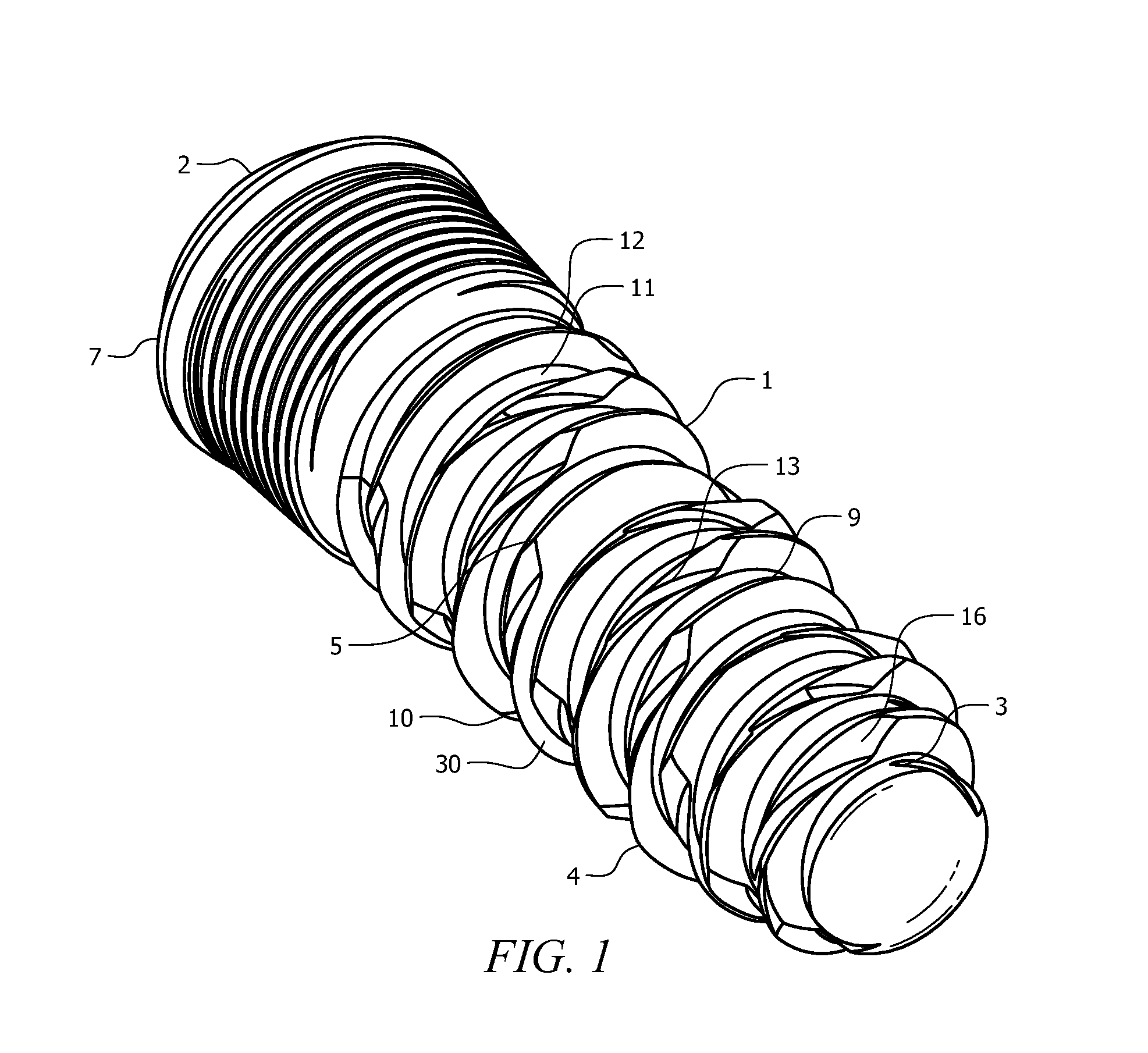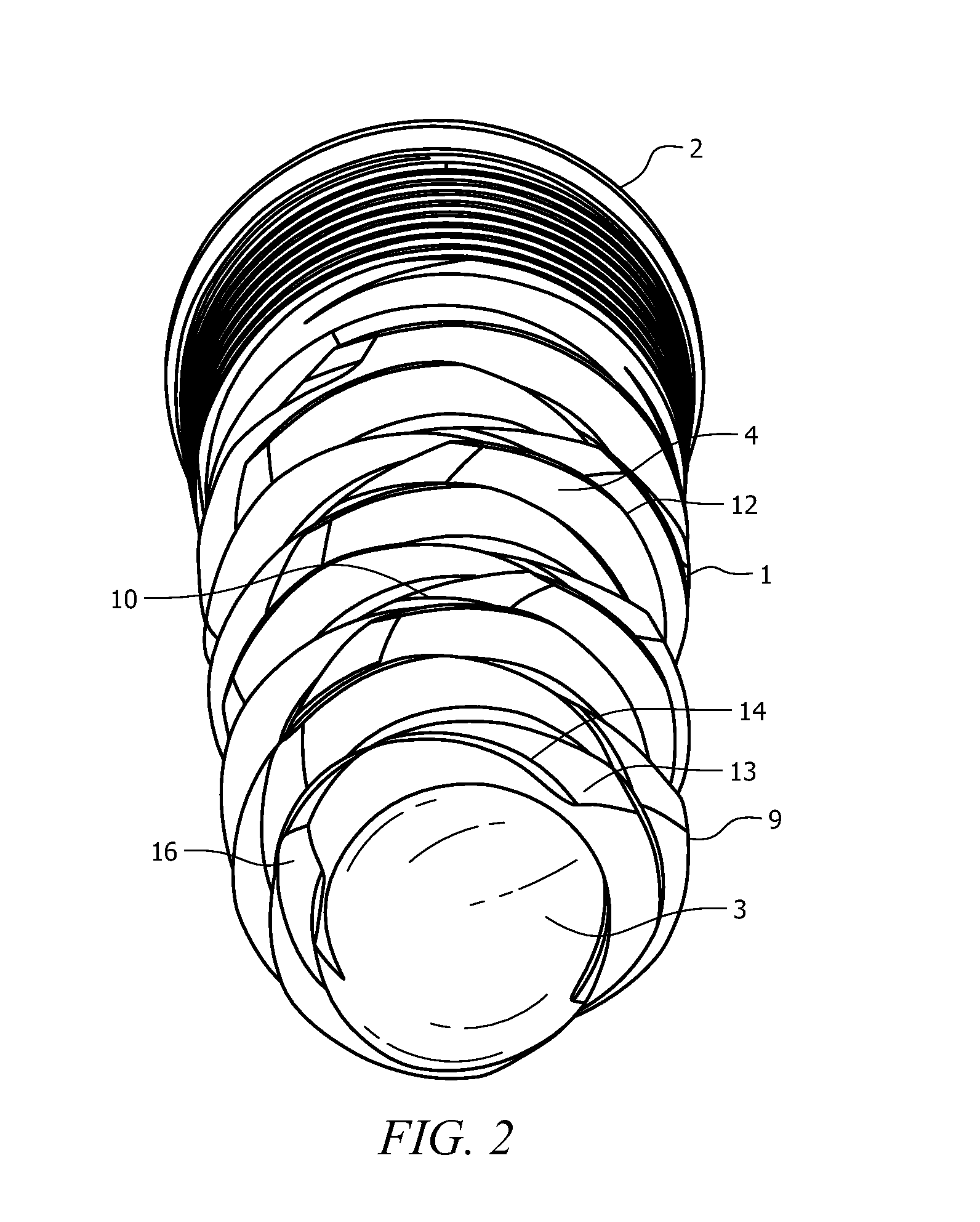Self-Clearing Self-Cutting Implant
a self-clearing, implant technology, applied in the field of bone implants, can solve the problems of micromotion, weakening and potential failure of implants, and limited thread cutting abilities of present devices, and achieve the effect of reducing micromotion
- Summary
- Abstract
- Description
- Claims
- Application Information
AI Technical Summary
Benefits of technology
Problems solved by technology
Method used
Image
Examples
Embodiment Construction
[0050]The present invention comprises a self-tapping implant which requires substantially less torque to install than devices currently in use, yet has significantly reduced micromotion immediately upon insertion. The reduction in effort is achieved by the inclusion of at least one cutting surface on each rotation of the thread about the body of the implant and by including a spiral groove which runs in an opposite direction to the threads. This enables the implant of the present invention to corkscrew into an opening instead of cutting course threads as is done in the art
[0051]Referring to FIGS. 1-3, according to one dental implant embodiment, the implant comprises a substantially cylindrical body 1 having a proximal end 2 and a distal end 3. The proximal end contains a prosthetic platform 7 onto which a prosthesis will be fitted. The body contains at least one external helical thread 9 which runs from the distal end 3 to the proximal end 2. The helical thread 9 maybe right or left...
PUM
| Property | Measurement | Unit |
|---|---|---|
| inner diameter | aaaaa | aaaaa |
| inner diameter | aaaaa | aaaaa |
| length | aaaaa | aaaaa |
Abstract
Description
Claims
Application Information
 Login to View More
Login to View More - R&D
- Intellectual Property
- Life Sciences
- Materials
- Tech Scout
- Unparalleled Data Quality
- Higher Quality Content
- 60% Fewer Hallucinations
Browse by: Latest US Patents, China's latest patents, Technical Efficacy Thesaurus, Application Domain, Technology Topic, Popular Technical Reports.
© 2025 PatSnap. All rights reserved.Legal|Privacy policy|Modern Slavery Act Transparency Statement|Sitemap|About US| Contact US: help@patsnap.com



